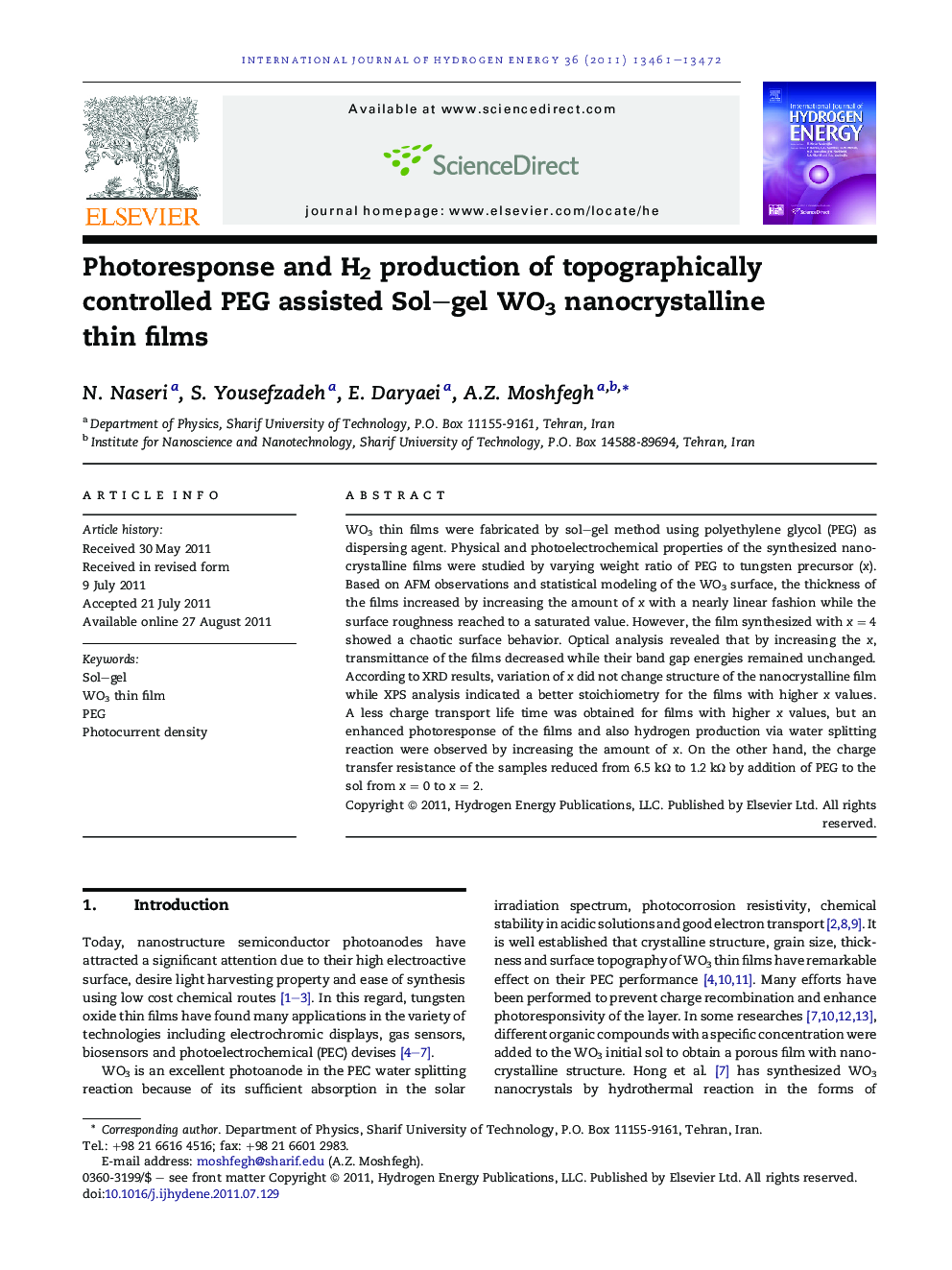| Article ID | Journal | Published Year | Pages | File Type |
|---|---|---|---|---|
| 1278688 | International Journal of Hydrogen Energy | 2011 | 12 Pages |
WO3 thin films were fabricated by sol–gel method using polyethylene glycol (PEG) as dispersing agent. Physical and photoelectrochemical properties of the synthesized nanocrystalline films were studied by varying weight ratio of PEG to tungsten precursor (x). Based on AFM observations and statistical modeling of the WO3 surface, the thickness of the films increased by increasing the amount of x with a nearly linear fashion while the surface roughness reached to a saturated value. However, the film synthesized with x = 4 showed a chaotic surface behavior. Optical analysis revealed that by increasing the x, transmittance of the films decreased while their band gap energies remained unchanged. According to XRD results, variation of x did not change structure of the nanocrystalline film while XPS analysis indicated a better stoichiometry for the films with higher x values. A less charge transport life time was obtained for films with higher x values, but an enhanced photoresponse of the films and also hydrogen production via water splitting reaction were observed by increasing the amount of x. On the other hand, the charge transfer resistance of the samples reduced from 6.5 kΩ to 1.2 kΩ by addition of PEG to the sol from x = 0 to x = 2.
► WO3 thin films were synthesized containing different amount of PEG using sol–gel method. ► Thickness of the films increased linearly by increasing PEG concentration. ► Also linear increasing behavior was observed for PEC response and H2 generation of samples. ► Modeling the surface topography data showed the surface roughness saturated in 0.5 ≤ x. ► Transport life time of the electrons in the films decreased by increasing PEG amount.
